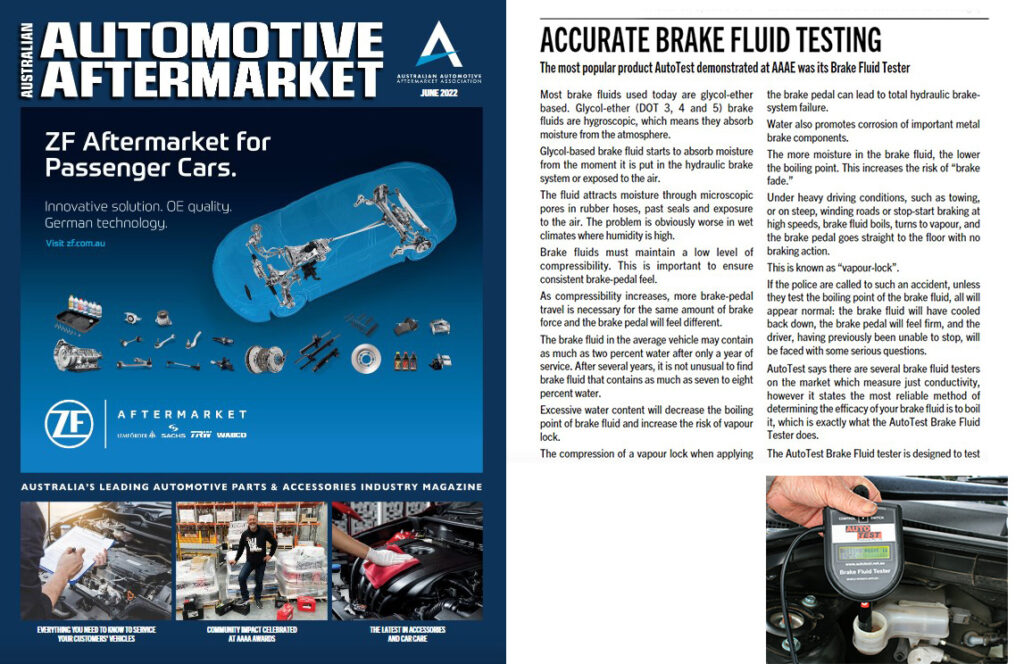As featured in AAAA Magazine – June 2022

The most popular product AutoTest demonstrated at the Australian Automotive Aftermarket Expo was their Brake Fluid Tester.
Brake fluids must have certain characteristics and meet certain quality standards for the braking system to work properly. Brake fluid is subjected to very high temperatures. It must have a high boiling point to avoid vaporising within the lines. Vaporisation is a problem because vapour is highly compressible relative to liquid, which will result in the brakes failing to stop the vehicle.
Most brake fluids used today are glycol-ether based. Glycol-ether (DOT 3, 4 and 5) brake fluids are hygroscopic, which means they absorb moisture from the atmosphere. Glycol-based brake fluid starts to absorb moisture from the moment it is put in the hydraulic brake system or exposed to the air. The fluid attracts moisture through microscopic pores in rubber hoses, past seals and exposure to the air. The problem is obviously worse in wet climates where humidity is high.
Brake fluids must maintain a low level of compressibility. This is important to ensure consistent brake-pedal feel. Whether you have been driving and using the brakes all day or have just started your vehicle and used the brakes for the first time, the pedal should feel the same. As compressibility increases, more brake-pedal travel is necessary for the same amount of brake force and the brake pedal will feel different.
The brake fluid in the average vehicle may contain as much as two per cent water after only a year of service. After several years, it is not unusual to find brake fluid that contains as much as seven to eight per cent water.
Excessive water content will decrease the boiling point of brake fluid and increase the risk of vapour lock. The compression of a vapour lock when applying the brake pedal can lead to total hydraulic brake-system failure. Water also promotes corrosion of important metal brake components.
The more moisture in the brake fluid, the lower the boiling point. This increases the risk of “brake fade”; under heavy driving conditions, such as towing, or on steep, winding roads or stop-start braking at high speeds, brake fluid boils, turns to vapour, and the brake pedal goes straight to the floor with no braking action. This is known as “vapour-lock”. If the police are called to such an accident, unless they test the boiling point of the brake fluid, all will appear normal: the brake fluid will have cooled back down, the brake pedal will feel firm, and the driver, having previously been unable to stop, will be faced with some serious questions.
So how do you test for moisture in brake fluid? The only approved way is to boil it.
There are several brake fluid testers on the market measure just conductivity, however the most reliable method of determining the efficacy of your brake fluid is to boil it, which is exactly what the AutoTest Brake Fluid Tester does.
The AutoTest Brake Fluid Tester is designed to test the boiling point of the fluid in the car in less than 30 seconds, with digital accuracy. It works on all grades of brake fluid and shows clearly what the fluid has boiled at, and what the DOT minimums are for each, making the fluid change decision easy for the technician and the customer.
Once the brake fluid has been changed, garages can offer to re-test the brake fluid using the AutoTest Brake Fluid Tester, to clearly show the improved results on the new fluid.